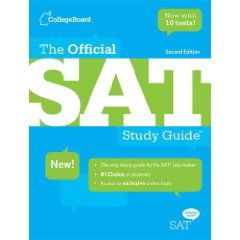A complete breakdown of structural changes, answer choices, topic distribution, and what students and educators need to know.
The Enhanced ACT is more than just a shorter test — it is a significant redesign affecting question counts, time allocation, skills tested, answer choices, and how composite scores are calculated. These updates impact how students prepare, how educators teach, and how tutoring centers evaluate performance.
This guide walks you through the deep section-by-section changes and explains why the new Enhanced ACT matters for student success.
Overview of the Most Important Changes
Here are the major updates implemented in the Enhanced ACT:
Shorter Test, Fewer Questions
The Enhanced ACT contains 44 fewer questions overall, making the exam approximately 75 minutes shorter than the legacy test.
More Time Per Question
Even though the test is shorter, students get more seconds per question, reducing pressure and improving pacing.
Math Answer Choices Reduced to Four
All math questions now have 4 answer choices instead of 5, improving clarity and speeding up decision-making.
Science Section Is Now Optional
Students may choose whether to take the Science test.
- If they take it ? They receive a Science score (and can also earn a STEM score).
- If they skip it ? Only English, Math, and Reading count toward the Composite.
Composite Score Formula Has Changed
The new Composite score is now the average of English + Math + Reading only.
Updated Reporting Categories and Topic Weights
Each subject has a refined blueprint, shifting the emphasis toward skills most aligned with real college readiness.
Embedded Field-Test Questions
Instead of a separate “experimental section,” field-test items are now integrated into each section.
SECTION-BY-SECTION BREAKDOWN
This is the most important part of understanding the Enhanced ACT — the actual content and skill changes.
1. ENGLISH — Clearer Structure & Balanced Skill Weighting
New Format
- 50 questions
- 35 minutes
What Changed
- Same total time, but fewer questions ? more time per question.
- Clearer question directives (improved wording and structure).
- More balanced skill distribution across categories.
New Reporting Categories
The Enhanced ACT English test now distributes questions approximately as follows:
| Category | Approx. Weight |
| Production of Writing | 38% – 43% |
| Conventions of Standard English | 38% – 43% |
| Knowledge of Language | 18% – 23% |
Why This Matters
- Students must now demonstrate equal strength in grammar, usage, and rhetorical skills.
- The English section is no longer dominated by grammar-only questions.
- Clear question cues help students quickly understand what skill is being assessed.
2. MATH — Reduced Options, Fewer Basic Items, Stronger Focus on Higher Math
New Format
- 45 questions
- 50 minutes
- 4 answer choices (instead of 5)
Key Content Changes
The Enhanced ACT increases the weight of higher-level math and reduces overly basic questions.
New Topic Distribution (Approx.)
| Category | Weight |
| Number & Quantity | 10–12% |
| Algebra | 17–20% |
| Functions | 17–20% |
| Geometry | 17–20% |
| Statistics & Probability | 12–15% |
| Modeling (across topics) | At least 20% |
Major Shifts
? Reduction in “Integrating Essential Skills”
Basic routine problems (simple arithmetic, basic algebra) have been reduced.
? Increase in Modeling Questions
Students must interpret real-world scenarios and select or build models.
? Reduction to Four Answer Choices
This speeds up decision-making and simplifies elimination strategies.
? Fewer Real-World Context Problems
More questions now focus on clean math concepts rather than heavy word contexts.
Why This Matters
- Students will need stronger conceptual understanding rather than memorized shortcuts.
- Guessing odds improve slightly with four choices instead of five.
- Higher difficulty shifts mean tutoring centers need updated materials aligned with the new blueprint.
3. READING — More Balanced Categories & Varying Passage Lengths
New Format
- 36 questions
- 40 minutes
New Reporting Categories
| Category | Weight |
| Key Ideas & Details | 44–52% |
| Craft & Structure | 26–33% |
| Integration of Knowledge & Ideas | 19–26% |
Key Changes
- Slight reduction in “Key Ideas & Details” dominance.
- Increased emphasis on synthesis, author’s purpose, and logical structure.
- More varied passage lengths (some shorter, some longer).
- Embedded unscored field-test passages occur in the middle of the test.
Why This Matters
- Students can’t rely solely on literal comprehension; deeper reading skills are more important.
- Varying passage lengths require improved pacing and adaptability.
- Structured skill weighting allows more targeted reading practice.
4. SCIENCE — Now Optional, With Clearer Skill Focus
New Format
- 40 questions
- 40 minutes
- Optional section
New Reporting Categories
| Category | Weight |
| Interpretation of Data | 38–50% |
| Scientific Investigation | 18–32% |
| Evaluation of Models, Inferences & Experimental Results | 24–38% |
Key Changes
- Science is optional (but recommended for STEM-oriented students).
- Increased emphasis on evaluating scientific scenarios, designs, and experimental outcomes.
- At least one passage may focus on engineering or design.
- More integration of scientific reasoning with given information.
Why This Matters
- Students who struggle with science can now skip this section and still complete the ACT.
- Students aiming for STEM majors benefit from earning the additional STEM score.
- Reasoning and analytical skills matter far more than memorized science facts.
SCORING CHANGES
New Composite Score
Average of:
- English
- Math
- Reading
(Science no longer counts unless needed for STEM reporting.)
STEM Score (Optional)
Average of:
- Math
- Science
Superscoring
Superscore continues, but now uses only English + Math + Reading.
WHAT THESE CHANGES MEAN FOR STUDENTS & EDUCATORS
1. Updated Prep Strategies Are Essential
Students must prepare using materials aligned with the Enhanced ACT blueprint, not the legacy version.
2. More Emphasis on Reasoning Over Memorization
Across all sections, the ACT is moving toward:
- deeper thinking
- analysis
- modeling
- integration of information
3. Math Section Requires the Most Adjustment
New option formats, higher-level math, and modeling mean students must retrain their approach.
4. Optional Science Impacts College-Planning Decisions
Students and counselors must decide whether the Science test is beneficial for admissions or scholarships.
5. Test Anxiety May Decrease
With fewer questions and more time per item, many students will find the Enhanced ACT more manageable.
How Socrato Helps Students Succeed on the Enhanced ACT
Socrato provides:
? Enhanced-Aligned Practice Tests
With balanced question distribution matching the new blueprint.
Official ACT Practice Test bubble sheet Scoring
Socrato provides all official ACT test 25MC1 – MC5 bubble sheet scoring as well as Real ACT passed released scoring.
Detailed Diagnostic Reports
Including:
- Topic-level analysis
- Skill gaps
- Time-management insights
- Custom remediation plans
.
Final Thoughts
The Enhanced ACT is a smarter, more modern assessment designed to measure real readiness for college and career success. Its refined question distribution, updated skill categories, shorter format, and more flexible structure make it both more efficient and more effective.
For tutoring centers and students, adapting early—and using resources aligned with the Enhanced format—is key to maximizing performance.










